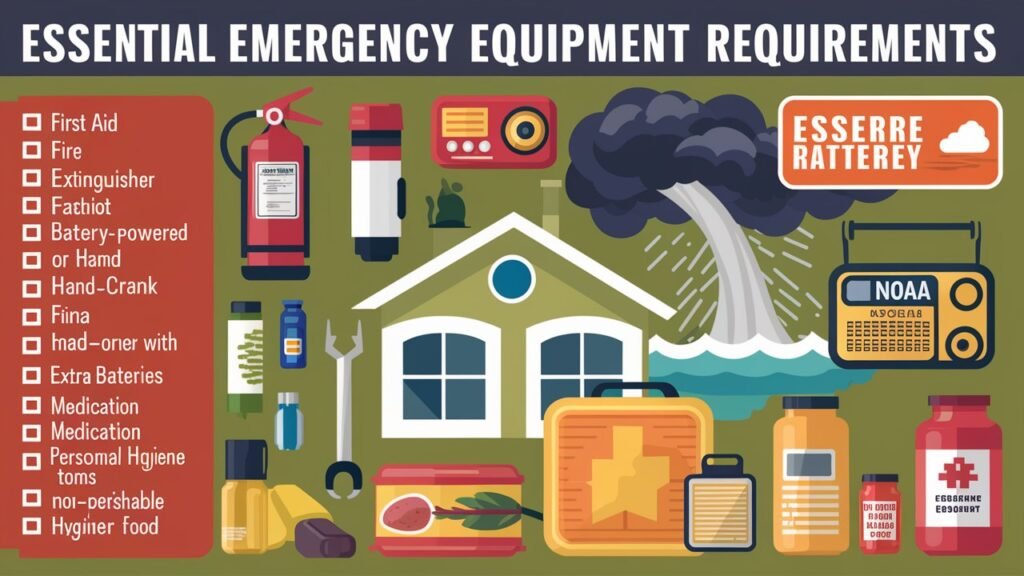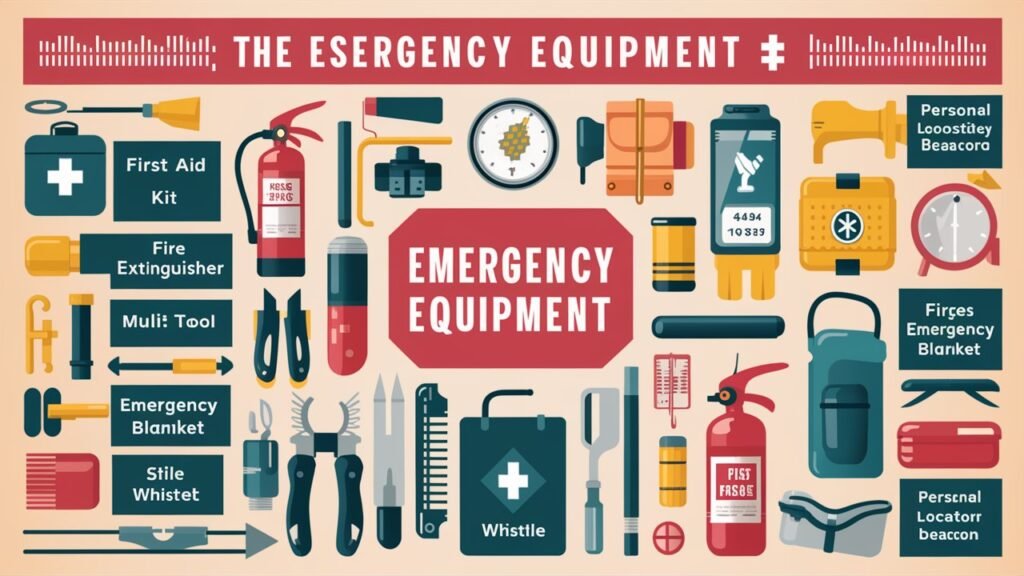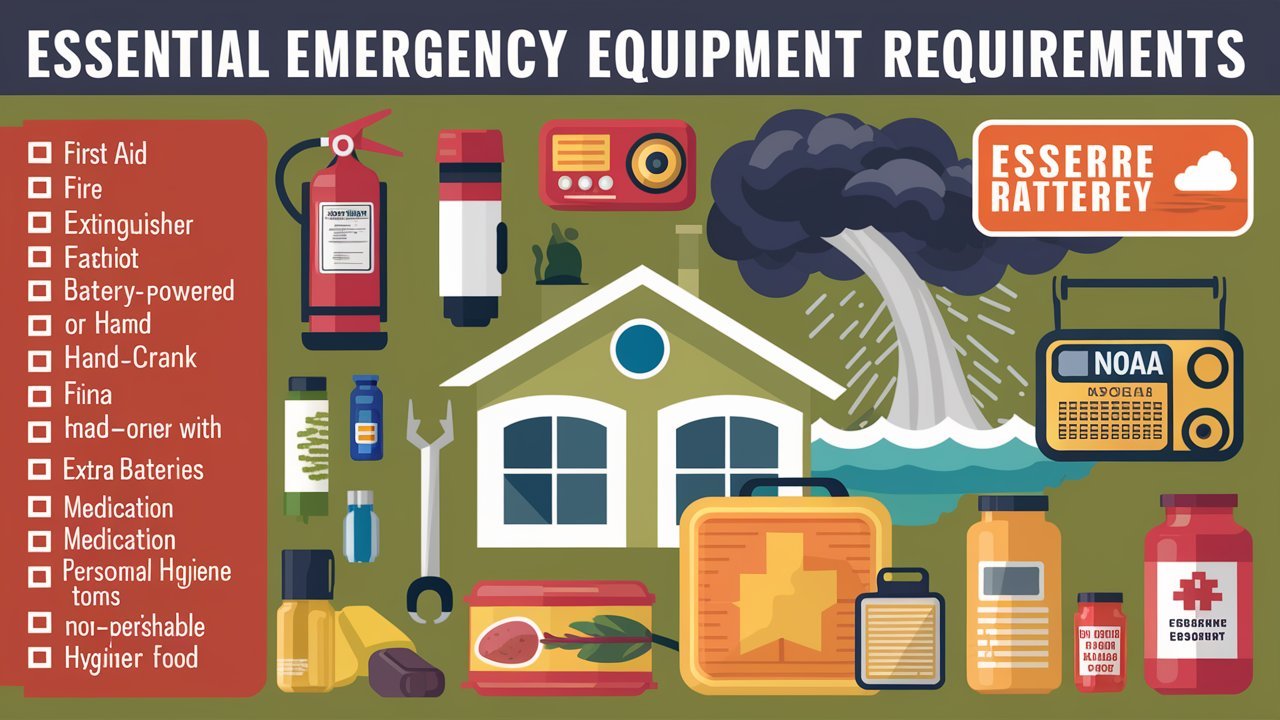In today’s unpredictable world, being prepared for emergencies is crucial. Whether you’re at home, work, or traveling, having the right emergency equipment can make a significant difference in mitigating risks and ensuring safety. This article provides comprehensive insights into the essential emergency equipment requirements, covering everything from first aid kits to communication devices.

Understanding the Importance of Emergency Equipment
Emergencies can strike at any moment, ranging from natural disasters to medical emergencies and accidents. Having the necessary equipment readily available can mean the difference between life and death. By being prepared and equipped with the right tools, individuals and organizations can effectively respond to emergencies, minimize injuries, and save lives.
Key Components of Emergency Equipment
1. Personal Protective Equipment (PPE)
In any emergency situation, personal safety is paramount. PPE includes items such as helmets, gloves, safety goggles, and masks, which protect individuals from physical and biological hazards.
2. First Aid Kits
First aid kits are essential for providing immediate medical care in emergencies. They typically contain bandages, antiseptics, pain relievers, and other medical supplies to treat injuries until professional help arrives.
3. Communication Devices
Effective communication is critical during emergencies to coordinate response efforts and seek assistance. Communication devices such as two-way radios, cell phones, and satellite phones enable individuals to stay connected and relay important information.

4. Emergency Lighting
During power outages or nighttime emergencies, adequate lighting is essential for visibility and safety. Emergency lighting options include flashlights, lanterns, glow sticks, and portable emergency lights.
5. Food and Water Supplies
In prolonged emergencies or natural disasters, access to food and water may be limited. Stocking emergency food rations and water supplies ensures sustenance until normal services are restored.
6. Shelter and Warmth
In extreme weather conditions or evacuation scenarios, having shelter and warmth is crucial for survival. Emergency shelter options include tents, tarps, and thermal blankets to protect against the elements.
7. Fire Extinguishers
Fire emergencies pose a significant risk, and having fire extinguishers readily available can help contain small fires before they escalate. It’s essential to have the appropriate type of extinguisher for different fire classes.
8. Tools and Multipurpose Items
Tools such as multi-tools, utility knives, and duct tape can serve multiple purposes in emergencies, from minor repairs to improvising solutions. These versatile items are invaluable additions to any emergency kit.
9. Navigation and Signaling Devices
In remote or unfamiliar locations, navigation tools such as maps, compasses, and GPS devices are essential for finding directions and signaling for help if lost or stranded.
10. Emergency Whistles and Signaling Devices
Audible signals are effective for attracting attention and signaling distress in emergency situations. Whistles, air horns, and signal flares are commonly used signaling devices for emergencies.
11. Sanitation and Hygiene Supplies
Maintaining hygiene and sanitation is crucial for preventing the spread of diseases, especially in crowded or disaster-affected areas. Sanitation supplies include hand sanitizer, disinfectant wipes, and personal hygiene products.
12. Cash and Important Documents
In emergencies that disrupt financial systems or require evacuation, having cash and essential documents such as identification, insurance papers, and contact information is vital for recovery and assistance.
13. Psychological Support Resources
Emotional and psychological well-being is often overlooked in emergency preparedness. Including resources such as stress-relief tools, comfort items, and information on mental health support can help individuals cope with the psychological impact of emergencies.
FAQs (Frequently Asked Questions)
- What should I include in a basic first aid kit? A basic first aid kit should include bandages, adhesive tape, antiseptic wipes, pain relievers, scissors, tweezers, and gloves.
- How often should I check and restock my emergency supplies? It’s recommended to check and restock emergency supplies at least twice a year, preferably before the start of each season.
- Can I customize my emergency kit based on specific needs or activities? Yes, it’s essential to customize your emergency kit based on factors such as location, climate, activities, and the number of people in your household or group.
- Are there any special considerations for pet emergency preparedness? Pet owners should include extra food, water, medications, and comfort items for their pets in their emergency kits. It’s also crucial to have a plan for pet evacuation and identification.
- How can I learn basic first aid and emergency response skills? Many organizations offer first aid and CPR training courses, including the American Red Cross and community health centers. Online resources and mobile apps also provide valuable information and tutorials.
- What should I do if I encounter someone in need of medical assistance during an emergency? If you’re trained in first aid, assess the situation, provide basic medical care within your capabilities, and call for professional help if necessary. If you’re unsure, seek assistance from trained responders or medical professionals.
Conclusion
Being prepared for emergencies requires careful planning and the right equipment. By understanding the essential emergency equipment requirements and taking proactive steps to assemble and maintain emergency kits, individuals and communities can enhance their readiness and resilience in the face of adversity.
Stay safe, stay prepared.

